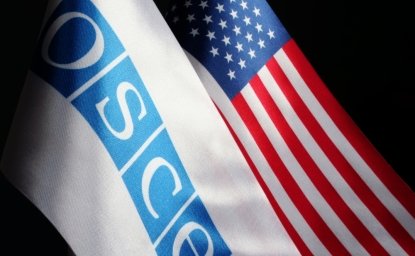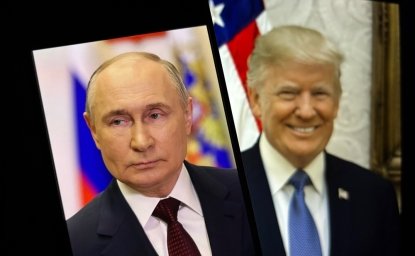The Russian Influence on American Sport

"The Soviet sport experience impacted the American sport experience in five specific ways," remarked Robert Edelman, Professor of History, University of California-San Diego, at a Kennan Institute seminar held on 12 December 2002. Edelman, joined by panelists Craig Masback, the current CEO of the U.S. Track and Field Association, and Ken Dryden, President of the Toronto Maple Leafs, began the discussion by noting the Russian contribution to western sport. Masback and Dryden provided insight about the Russian influence from an athlete's perspective, both having participated in international competition against the U.S.S.R.
Edelman categorized the Soviet and Russian contribution to American sport into several areas: the introduction and development of women's sports, the development of sports science, the professionalization and politicalization of sports, and finally, the use of the sport system as a "Potemkin village" facade to camouflage deeper economic and political problems. Edelman explained that the visibility of Soviet women's participation in sports had two purposes, "the first was to demonstrate gender equality in the Soviet Union, and the second was to ‘win' the Olympics, which required winning the most medals." In order to meet the challenge posed by Soviets, opportunities for American women increased, including the establishment of Title IX, which led to the formation of women's sports programs. Edelman argued that the Soviets had a profound influence on the development of sports science, in both the laboratory and at the coaching level. He characterized the success of Russian coaches as one of the greatest achievements of Soviet sports.
Edelman noted that "the introduction of the Soviet ‘state-professional' athlete to the Olympics had a profound impact on the Olympic movement," and has continued to evolve to the present. Edelman explained that Soviets viewed sports as an opportunity to show both foreign and domestic audiences the power and success of Soviet communism. According to Edelman, Americans were generally impressed by this version, perhaps more so than other international audiences who were more familiar with the Soviets' ongoing struggles in international soccer. Edelman contended that the Soviets used their sport system as an idyllic "Potemkin village," to mask the overall weaknesses of the Soviet system, especially those of the economy.
Masback, a former member of the International Olympic Committee, discussed the Russian influence on Olympic sports. According to Masback, the Soviets shaped the Olympics in three primary areas: the use of sport as ideology; a systematic approach to identifying and developing talent; and finally, the use of drugs in sports. He explained that the old Soviet adage "a medal is a medal" and their use of the overall medal count to claim superiority are now fundamental elements of the U.S. Olympic Committee guidelines for the development of U.S. sports today. Each year, the U.S. Track and Field Association must predict how many medals U.S. athletes will win in each event in order to receive funding from the U.S. Olympic Committee.
Masback concluded that, though the Soviet system was never as successful as it seemed, it has triumphed in a number of ways. He stated that the Soviet Union "succeeded in achieving its ideological aims through sports," and an indication of influence is that "we have all adopted their practices now and are aspiring to do what they achieved decades ago."
Dryden concluded the panel by discussing his experience as a direct participant in competitions against the Soviets. He explained that, while we now know more about the economic realities that confronted the Soviet system during the 1970s, during the Cold War "people lived what they imagined to be the realities and were hugely impacted by what they imagined the situation to be." Dryden noted that the Russian professionalization of amateur sports, especially in sports such as hockey, had a profound impact. Dryden explained that amateur hockey was historically club versus club, town versus town, or country versus country, but that "when it got to be way of life versus way of life, then the stakes started to rise, and amateur sports became state-professional sports, with the biggest stage being the Olympics."
Dryden discussed his experience as a goalie on the Canadian national hockey team during the 1972 "Summit Series" against the Soviet national team. He noted that perhaps the greatest Russian influence on professional sports was their ability to turn their weaknesses and limited resources into advantages. In the case of hockey, Russians could not afford to buy new sticks or have state-of-the-art skates. Therefore, they invented a new style of play, relying on quick passes and different skating techniques to compensate for their constraints. Dryden stated that the Russians were also instrumental in introducing off-season training, which increased the conditioning and skills of the players. These evolutionary changes surprised the Canadians and other members of the international hockey world in 1972, and soon became recognized as reasonable alternatives to the norm.
Author
Ph.D.candidate, Department of Politics, University of Virginia

Kennan Institute
After more than 50 years as a vital part of the Wilson Center legacy, the Kennan Institute has become an independent think tank. You can find the current website for the Kennan Institute at kennaninstitute.org. Please look for future announcements about partnership activities between the Wilson Center and the Kennan Institute at Wilson Center Press Room. The Kennan Institute is the premier US center for advanced research on Eurasia and the oldest and largest regional program at the Woodrow Wilson International Center for Scholars. The Kennan Institute is committed to improving American understanding of Russia, Ukraine, Central Asia, the South Caucasus, and the surrounding region through research and exchange. Read more

Explore More
Browse Insights & Analysis
The OSCE is a Good Value for America

Infographic | Russia's Illegal Annexation of Crimea

Russia’s Indigenous Communities and the War in Ukraine
